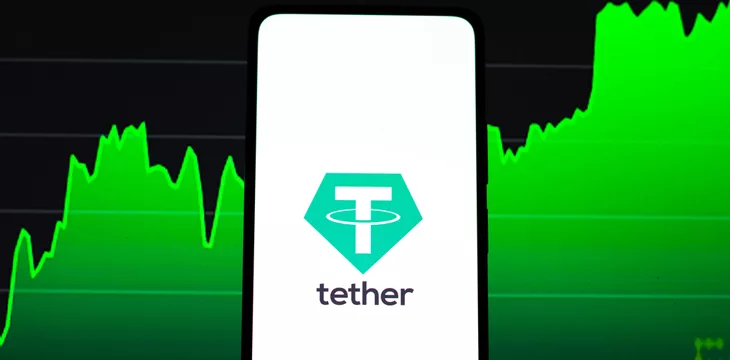|
Getting your Trinity Audio player ready...
|
Tether now claims to be the globe’s 22nd largest purchaser of U.S. Treasury bills. However, the world’s leading stablecoin appears to be ignoring how vulnerable those assets are to seizure by U.S. federal authorities.
On September 5, Tether CTO Paolo Ardoino—one of only two Tether executives who dare speak in public—declared that Tether’s “exposure in” T-bills has hit $72.5 billion, up from a mere $55.8 billion that Tether claimed to possess at the end of June. Ardoino claimed this ranks Tether ahead of nations such as Australia, Mexico, Spain, and the United Arab Emirates on the T-bill fanboy chart.
Despite this boost, Tether’s market cap has declined by around $400 million since June 30 to its current cap of $82.9 billion. And Ardoino neglected to specify which of Tether’s other reserve asset categories might have been thinned to provide this significant boost in T-bills (for which Tether categorically refuses to provide the CUSIP codes).
Has Tether been selling off the BTC tokens it allegedly purchased with unexplained profits? Or perhaps Tether finally called in the billions in ‘secured loans’ it vowed to purge from its books (but mysteriously increased by $150 million from Q1 to Q2)? Tether had already effectively drained its actual cash stockpile, so perhaps it melted down some of its over $3 billion in precious metals?
In reality, Tether had already declared its T-bill haul to be $72.5 billion at the time of that June 30 ‘attestation,’ assuming you counted its ‘indirect’ investments, including money market funds and overnight reverse repurchase agreements. But since Ardoino is choosing to present this as new confirmation of Tether’s strength, let’s take the opportunity to examine the feet of clay on which this ‘crypto’ colossus is precariously balanced.
The narrative around the main risk to Tether really needs to shift. The debates about reserves are never ending. If we believe the attestations, Tether’s reserves are actually the safest they’ve ever been.
— Novacula Occami (@OccamiCrypto) September 1, 2023
Last week, the Twitter (er, ‘X’) user known as OccamiCrypto posted a lengthy thread claiming that the focus on Tether’s never-audited reserves was misguided, given the greater threat of Tether’s alleged all-in T-bill bet. The thread noted that Tether has claimed its T-bills are managed by New York-based broker-dealer Cantor Fitzgerald, which—unlike Tether’s claims about its own operations—is very much within the reach of U.S. federal regulators, not to mention the long arm of the Department of Justice (DoJ).
That means Tether’s alleged $72.5 billion in T-bills—roughly 87.5% of Tether’s market cap—is but “one court order away” from being frozen and ultimately seized by U.S. authorities. This looks increasingly likely, given the nonstop drumbeat of media reports linking Tether to bank fraud, facilitating the evasion of economic sanctions and money laundering by terrorists and other unsavory elements.
Assuming the DoJ has the goods on Tether, billions in fines and penalties could ultimately be levied against the company. Even if Tether were somehow to prevail in court, the lengthy uncertainty over that significant a chunk of Tether’s reserves would cause a serious depegging of Tether’s 1:1 ratio with the U.S. dollar.
Recall that when Tether’s rival Circle had a mere $3.3 billion of its reserves—less than 10% of its market cap at the time—caught in limbo by this spring’s collapse of Silicon Valley Bank (SVB), the USDC stablecoin briefly slipped to as low as 87¢ until the U.S. Federal Reserve guaranteed all SVB customer deposits.
Following this depegging, Tether chose to dunk on Circle in a self-serving blog post that noted without a hint of irony “the risks stablecoin users face while holding a stablecoin that has a significant jurisdictional concentration in one country or banking system. Concentrating reserves can be a useful tool to try to expedite growth, but as it comes with unavoidable jurisdictional risks it is unsuitable for a stablecoin that plays a central role in the industry.”
USDC is not quite dead yet
While Tether’s market cap benefited from USDC’s hiccups, Circle executives have attempted to give as good as they get. In interviews, they use phrases like “unsafe, opaque” to describe Tether while citing Circle’s comparatively unfettered access to the U.S. banking system. (This isn’t always a positive, as rumors have USDT holders converting to other tokens and then to USDC in order to obtain actual U.S. dollars.)
Furthermore, despite its own challenges and issues, Circle has access to the types of trade deals that Tether can only dream about. For instance, Visa (NASDAQ: V) just announced an expansion of its ‘stablecoin settlement capabilities’ that will integrate USDC with merchant acquirers Worldpay and Nuvei.
Visa previously married USDC with its VisaNet digital payments network, which encompasses nearly 15,000 financial institutions transacting in over 25 different currencies. In 2021, Visa teamed up with digital asset exchange Crypto.com in Australia, enabling USDC payments via Crypto.com-branded Visa prepaid debit cards.
Sadly, these efforts rely on the Ethereum and Solana blockchains, meaning their operations are (in the case of Ethereum) overly centralized and (on Solana) lacking any kind of assurance that the blockchain won’t simply freeze up and require rebooting (again).
Regardless, Visa’s embrace of USDC is another slap to Binance, the other Crypto Crime Cartel charter member, which saw Visa halt its Binance co-branded debit cards in July. A veritable parade of payment processing partners have ditched Binance this year, not wishing to be caught up in the U.S. criminal charges that are expected to be filed any week now against the largest exchange by trading volume.
Kill ’em all
Not everyone is a fan of stablecoins, making further inroads into mainstream finance. The New York-based trade publication American Banker published an op-ed last month calling PYUSD—the recently launched U.S.-dollar-denominated stablecoin by PayPal (NASDAQ: PYPL) and Paxos Trust—“a grave threat to financial stability.”
Penned by Arthur E. Wilmart Jr., professor emeritus of law at George Washington University, the op-ed pointed out that neither PayPal nor Paxos were Federal Deposit Insurance Corporation-insured institutions. Nor are their operations “examined or supervised by any federal banking agency.”
Reminding readers that “more than 20 stablecoins have failed since 2016,” Wilmart claimed PYUSD “will greatly increase the dangers that are already present in PayPal’s operations” by creating “additional uninsured and payable-on-demand liabilities.”
Wilmart then aimed at the pro-stablecoin legislation making tentative progress in Congress under the auspices of Rep. Patrick McHenry (R-NC). Wilmart noted that McHenry’s bill would allow “uninsured state-licensed nonbanks [like PayPal and Paxos] to issue stablecoins that would not be regulated by either federal banking agencies or the Securities and Exchange Commission.”
Furthermore, McHenry’s bill “would not allow the Fed to examine or supervise state-licensed stablecoin providers unless the relevant state agency invited the Fed to do so. State officials would be very unlikely to ask the Fed to oversee their stablecoin providers until a crisis erupts, at which point it would be far too late for the Fed to take effective preventative measures.”
Tether finds new love after Binance split
Finally, pour out a cold one for BUSD, the former stablecoin partnership of Binance and Paxos. BUSD has been on life support since February when New York regulators ordered Paxos to halt new mints of BUSD because Binance was issuing its own version of BUSD without sufficient dollars behind it.
After peaking at $23.5 billion last November, BUSD’s market cap slipped below $3 billion on August 31 and currently stands at around $2.75 billion. Last week, Binance announced that it would be officially calling time on BUSD on its platform by next February.
On Monday, when one BUSD fan waxed nostalgic regarding BUSD’s decline, Binance founder Changpeng ‘CZ’ Zhao unsentimentally suggested they transfer their affections to FDUSD, the newest stablecoin on the block, which CZ has been promoting as the new king of the stablecoin world. Since FDUSD’s launch around a month ago, its market cap has grown to $383 million, mainly due to Binance offering zero-fee trading pairs on its platform.
Binance used to lean heavily on a steady influx of USDT (and Justin Sun’s TUSD) to fuel its wash trading, but CZ and Tether appear to have had a falling out. Tether’s new go-to exchange—not counting its sister company Bitfinex—in terms of trading volume is Bitforex. The latter’s 24-hour trading volume recently rocketed to roughly half of Binance’s, despite Bitforex’s approximately six million monthly visits being barely 10% of Binance’s. Huh. Oh, and look—there’s a Justin Sun connection. Huh.
Wherever Tether goes, scandal is sure to follow. But it seems Bitforex—the precise location of which remains something of a mystery—has already been down this road. Perhaps Tether was merely looking for someone it didn’t have to corrupt from scratch.
Follow CoinGeek’s Crypto Crime Cartel series, which delves into the stream of group—from BitMEX to Binance, Bitcoin.com, Blockstream, ShapeShift, Coinbase, Ripple,
Ethereum, FTX and Tether—who have co-opted the digital asset revolution and turned the industry into a minefield for naïve (and even experienced) players in the market.

 05-07-2025
05-07-2025 





